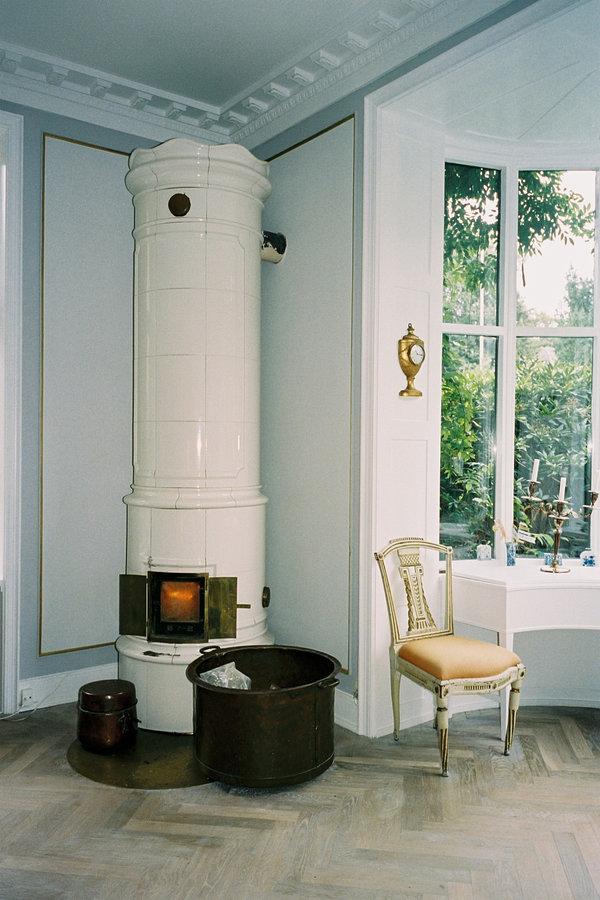When Sophie Bille Brahe and her younger brother, Frederik, were growing up in Hellerup, a leafy suburb north of Copenhagen, Denmark, their parents had two unorthodox methods of keeping the house quiet when they wanted to sleep in on Sunday mornings. To distract Sophie, they permitted her to rummage through the bric-a-brac in the drawers of a 17th-century Chinese cabinet that stood in the living room of their two-story 1920s-era house. “This was before television for kids,” she says. “I could sit there all morning organizing, arranging and looking at old things. I once found a diamond ring my parents didn’t know was there.” To occupy Frederik, meanwhile, they would give him a sandwich wrapped in many layers of tinfoil.
“It’s so funny considering what we do now,” says Frederik, 35. While he has enjoyed a career as a chef and has launched three successful restaurants in Copenhagen — including Atelier September, a longstanding haunt of the city’s fashion and design worlds — his sister has become one of Denmark’s most sought-after jewelry designers. Her eponymous line of delicate, sculptural pieces is sold at Dover Street Market, among other stores, and she has collaborated on accessories with brands that range from the decades-old Danish design firm Georg Jensen to the avant-garde Japanese label Sacai.
Sibling rivalry in childhood — “I was extremely jealous of Sophie,” Frederik says with a sheepish smile — has given way to close friendship in adulthood. “When I’m with my brother, I feel like nothing else in the world matters,” says Sophie, 38, who lives in Gentofte, a suburb north of Copenhagen, with her five-year-old son, Johan, and Border collie, Snoop. “In a way, Frederik and I are completely the same yet completely the opposite,” she adds. “We both searched for something to express ourselves with.”
Inside Sophie and Frederik Bille Brahe’s Family Home
8 Photos
View Slide Show ›

Sophie launched her label in 2011, two years after graduating from the Royal College of Art in London, and makes all of her jewelry by hand using centuries-old goldsmith techniques, including creating her own alloys. The siblings count the 16th-century astronomer Tycho Brahe among their ancestors, and “I always have the sky as an element of inspiration,” Sophie says. A case in point is her signature Croissant de Lune, a curved gold earring with eight white diamonds inset that follow the line of the earlobe, echoing the shape of the crescent moon. Her latest collection, Aphrodite, is a homage to the paintings of Botticelli. It includes elegant pearl necklaces and earrings that resemble bunches of grapes. After the death of the siblings’ father last month, Sophie has temporarily moved back to the family home to be with her mother, and her new collection, she says, “was very much about me feeling happy again and celebrating life.”
Frederik has had occasion for celebration this year, too. In August, he married the Danish fashion model Caroline Brasch Nielsen (for whom Sophie designed a wedding ring: a twist on the Croissant de Lune, with a swirl of graduating diamonds), and earlier this year, he launched his third restaurant, Kafeteria, at the National Gallery of Denmark. Designed in collaboration with the Danish-Vietnamese artist Danh Vo, the dining room features Dinesen oak flooring, Isamu Noguchi’s Akari light sculptures and tables and chairs from Enzo Mari’s 1974 collection of D.I.Y. furniture. Seasonal vegetables dominate the menu; dishes include pumpkin with Danish feta and rye seeds served alongside turnips with hummus and coriander. “For me, it’s obvious that the inspiration for cooking should be the season, as much as possible,” Frederik says.
After leaving school, he trained as a chef in Copenhagen and London, working in acclaimed restaurants such as Nobu and Sketch before opening Atelier September, his first cafe, in 2013. The coffee-shop-cum-boutique combines bohemian design — minimalist furniture and whitewashed walls adorned with vintage posters — with Instagram-friendly dishes like avocado on rye bread. Last year, he opened Apollo Bar & Kantine, an unfussy, affordable cafe at Kunsthal Charlottenborg, a contemporary art gallery; next up is the launch of a pop-up cafe in the Aoyama district of Tokyo, a collaboration with the Danish design firm Hay, with whom he launched a range of colorful, everyday kitchenware in 2017.
Frederik was drawn to the culinary world, he says, because it was “intensely dominated by a craft culture,” a sentiment that his sibling shares. “Having a craft is a very beautiful thing,” says Sophie, “and it’s a very Scandinavian thing — to know that if all your dreams don’t work, you still have a craft. If my company goes bananas, I can still sit and polish jewelry in a workshop.”




